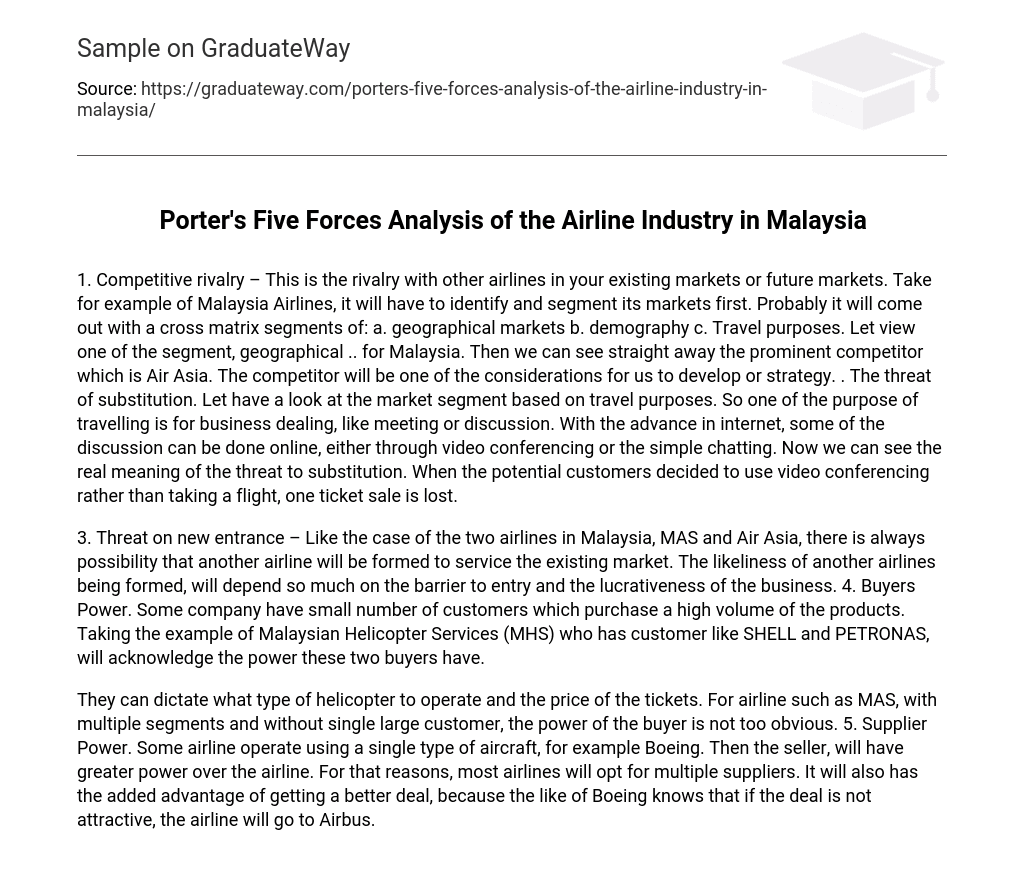1. Competitive rivalry – This is the rivalry with other airlines in your existing markets or future markets. Take for example of Malaysia Airlines, it will have to identify and segment its markets first. Probably it will come out with a cross matrix segments of: a. geographical markets b. demography c. Travel purposes. Let view one of the segment, geographical .. for Malaysia. Then we can see straight away the prominent competitor which is Air Asia. The competitor will be one of the considerations for us to develop or strategy. . The threat of substitution. Let have a look at the market segment based on travel purposes. So one of the purpose of travelling is for business dealing, like meeting or discussion. With the advance in internet, some of the discussion can be done online, either through video conferencing or the simple chatting. Now we can see the real meaning of the threat to substitution. When the potential customers decided to use video conferencing rather than taking a flight, one ticket sale is lost.
3. Threat on new entrance – Like the case of the two airlines in Malaysia, MAS and Air Asia, there is always possibility that another airline will be formed to service the existing market. The likeliness of another airlines being formed, will depend so much on the barrier to entry and the lucrativeness of the business. 4. Buyers Power. Some company have small number of customers which purchase a high volume of the products. Taking the example of Malaysian Helicopter Services (MHS) who has customer like SHELL and PETRONAS, will acknowledge the power these two buyers have.
They can dictate what type of helicopter to operate and the price of the tickets. For airline such as MAS, with multiple segments and without single large customer, the power of the buyer is not too obvious. 5. Supplier Power. Some airline operate using a single type of aircraft, for example Boeing. Then the seller, will have greater power over the airline. For that reasons, most airlines will opt for multiple suppliers. It will also has the added advantage of getting a better deal, because the like of Boeing knows that if the deal is not attractive, the airline will go to Airbus.





